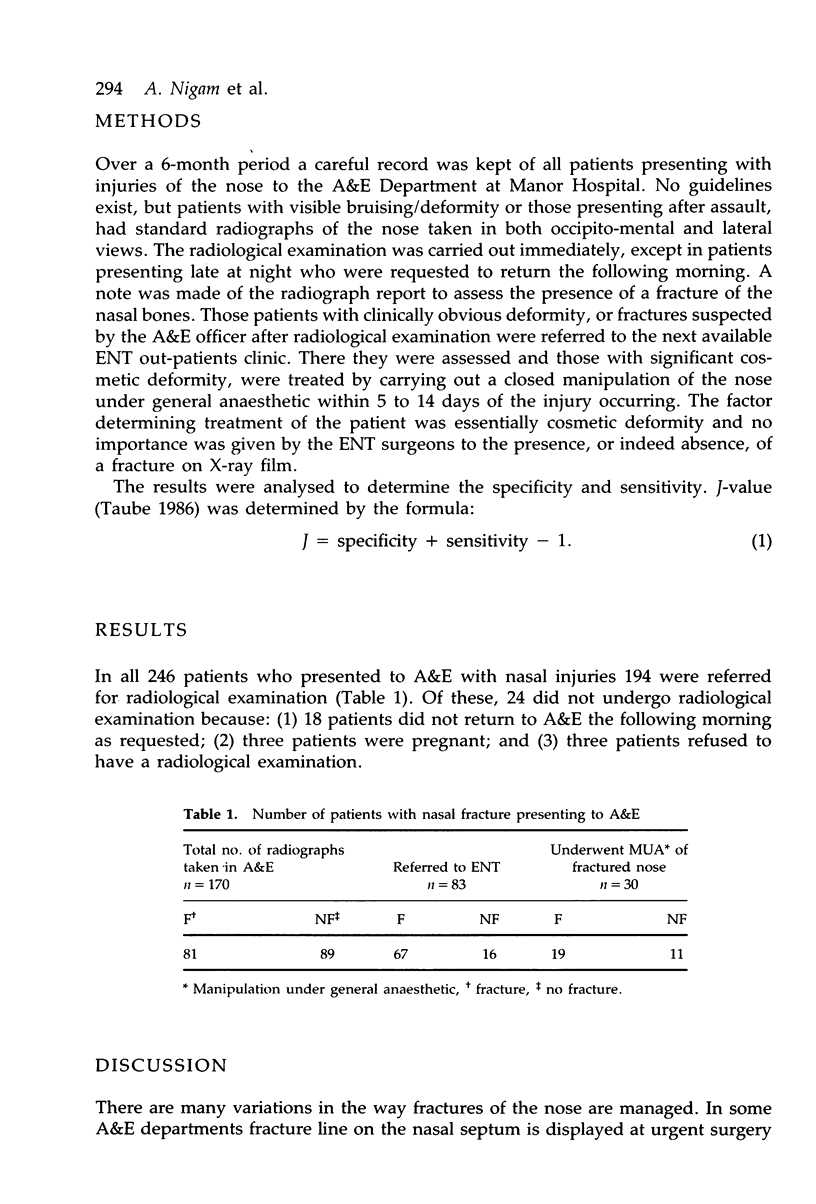Abstract
Over a 6-month period a record was kept of all patients presenting to the accident and emergency (A&E) department with nasal injuries. The results of the nasal radiographs were analysed to gauge their benefit. It was found that there was poor correlation between the radiological findings and the presence of external deformity, the latter determining the decision to carry out treatment. Routine radiographs of the nose are unnecessary in patients with nasal trauma.
Full text
PDF




Selected References
These references are in PubMed. This may not be the complete list of references from this article.
- Clayton M. I., Lesser T. H. The role of radiography in the management of nasal fractures. J Laryngol Otol. 1986 Jul;100(7):797–801. doi: 10.1017/s002221510010009x. [DOI] [PubMed] [Google Scholar]
- Murray J. A., Maran A. G., Mackenzie I. J., Raab G. Open v closed reduction of the fractured nose. Arch Otolaryngol. 1984 Dec;110(12):797–802. doi: 10.1001/archotol.1984.00800380027008. [DOI] [PubMed] [Google Scholar]
- Murray J. A., Maran A. G. The treatment of nasal injuries by manipulation. J Laryngol Otol. 1980 Dec;94(12):1405–1410. doi: 10.1017/s0022215100090241. [DOI] [PubMed] [Google Scholar]
- Taube A. Sensitivity, specificity and predictive values: a graphical approach. Stat Med. 1986 Nov-Dec;5(6):585–591. doi: 10.1002/sim.4780050606. [DOI] [PubMed] [Google Scholar]
- Watson D. J., Parker A. J., Slack R. W., Griffiths M. V. Local versus general anaesthetic in the management of the fractured nose. Clin Otolaryngol Allied Sci. 1988 Dec;13(6):491–494. doi: 10.1111/j.1365-2273.1988.tb00323.x. [DOI] [PubMed] [Google Scholar]


